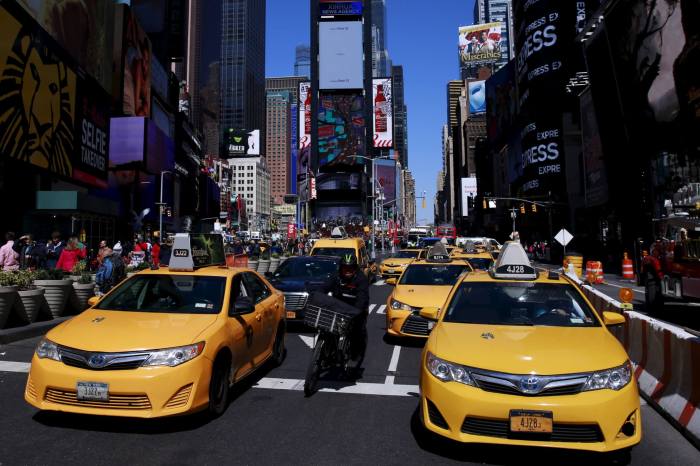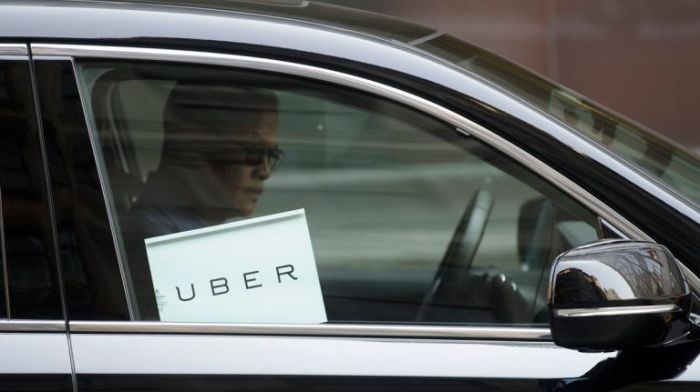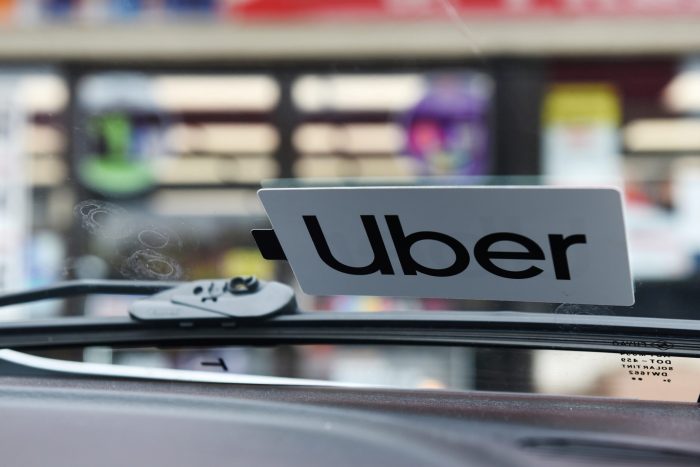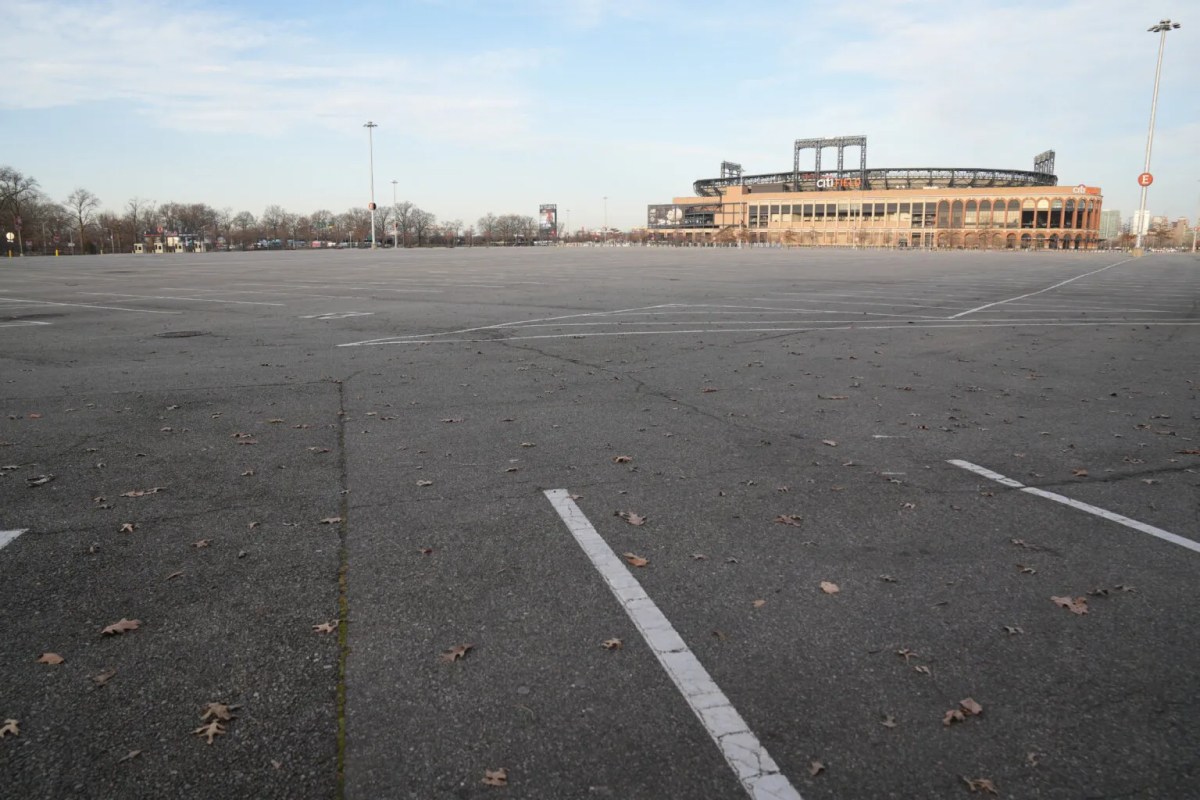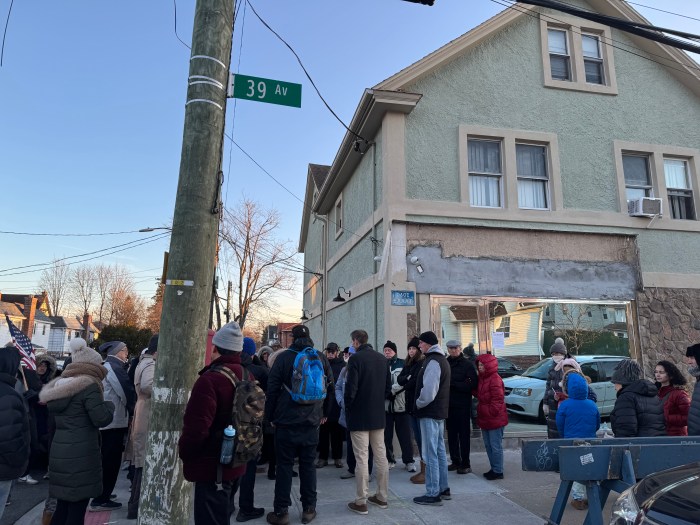All of the city’s 100,000 Uber and Lyft vehicles must be running on clean, electric power by 2030, Mayor Eric Adams announced at his State of the City address on Thursday.
“We are announcing today that Uber and Lyft will be required to have a zero-emission fleet by 2030. That’s zero emissions from over 100,000 vehicles in our streets,” Hizzoner announced during his speech at the Queens Theatre in Flushing Meadows Corona Park. “We’re pleased that both companies are embracing the shift, and we look forward to working with them to get it done.”
The rule will only apply to for-hire vehicle services deemed “high-volume” by the city, which only includes Uber and Lyft.
The move comes as part of a broader push to electrify the motor vehicles that make the city go ’round. The mayor recently announced that the city would replace more than 900 gas guzzlers in the city vehicle feet with electric vehicles (EVs) and establish 315 EV charging stations across the five boroughs. In his speech, the mayor said the city would encourage drivers writ large to switch to EVs by investing in charging infrastructure all over the city.
The mayor’s pledge comes one day after the Taxi & Limousine Commission approved an increase in the city’s for-hire vehicle cap of 115,000, allowing for the issuance of 1,000 new licenses this year exclusively for EVs. 600 licenses will go to individual drivers and 400 will go to corporations, though no individual corporation will be able to own more than twenty-five.
“We are thrilled by the Mayor’s vision for electrification and committed to working towards a cleaner, more sustainable high-volume fleet,” said TLC Commissioner David Do. “We will be announcing more details surrounding this exciting initiative in the coming weeks.”
Spokespersons for both Uber and Lyft said that the companies are aligned with the mayor’s policy and plan to work with the city to meet the carbon emissions-reducing goal.
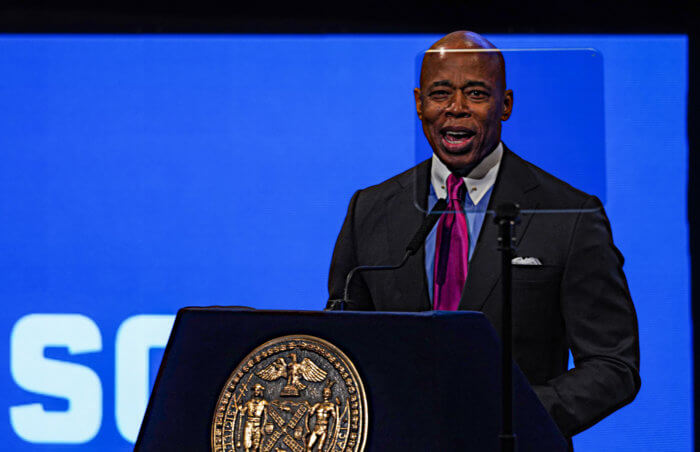
“We applaud the Mayor’s ambition for reducing emissions, an important goal we share,” said Uber spokesperson Josh Gold in a statement. “Uber has been making real progress to become the first zero-emissions mobility platform in North America, and there’s much more to do. We look forward to working with the TLC to achieve zero-emissions in New York City in a way that benefits drivers, riders, and the city.”
Presently, just over 4% of mileage covered by Uber trips in North America are completed by zero-emission vehicles, according to a company blog post; that is still more than 8 times higher than among the general US population, the company says.
Lyft also expressed support for the new policy, while highlighting incentives it’s proffering to drivers to make the switch to EVs, including a $150 weekly bonus for completing 50 rides in an EV.
“Three years ago, we announced our commitment to reach 100% electric vehicles on the Lyft platform by 2030. We are excited to partner with New York City on our journey,” said Paul Augustine, Lyft’s director of sustainability. “New York’s commitment will accelerate an equitable city-wide transition to electric, and we’re eager to collaborate with the TLC on an ambitious plan for a rideshare clean mile standard. With smart, targeted investments in incentives and charging infrastructure, we’ll help tear down the barriers that prevent drivers from making the switch to electric — and build a cleaner and more sustainable New York in the process.”
What’s unclear is exactly who will be left to foot the bill. A spokesperson for the mayor said that the TLC will formulate rules in the coming months to effectively require that, by 2030, all rides dispatched by Uber and Lyft must produce zero carbon emissions. Complying with the rules would be the responsibility of the two rideshare giants, the spokesperson said.
A press release sent out by the mayor’s office noted that 100% electrification “will be achieved with no new costs for individual drivers.”
“Going electric for a cleaner city for our families is something we support as New Yorkers and we appreciate the Mayor’s bold vision,” said Brendan Sexton, president of the 80,000-strong Independent Drivers Guild union. “Rideshare drivers are already struggling to make ends meet, so we are pleased the Mayor has committed to ensure that the transition will come at no additional cost to drivers. To make this vision a reality and provide necessary infrastructure, we urge the city to establish charging and rest areas for for-hire vehicle drivers at critical locations throughout the city where drivers live and work.”
But Uber and Lyft famously farm out much of the cost of doing business to their drivers, including buying their own cars and paying for fuel and maintenance.
Bhairavi Desai — who as executive director of the New York Taxi Workers Alliance represents 27,000 drivers in the Big Apple, half of them working for Uber and Lyft — isn’t optimistic that the costs of eliminating the company’s carbon emissions won’t be borne by their hardworking operators.
“Uber and Lyft don’t pay one dime toward the cost of the car, insurance, maintenance, repairs or fuel,” Desai said in an email. “It’s hard to have faith the companies won’t be spoilers in this program where drivers have all the costs. The city will have to be vigilant to protect drivers.”
Desai noted that the companies haven’t made clear whether they will cover the cost of replacing vehicles when the upcoming TLC rules require the gas guzzlers to be retired.
“Drivers pay for all the costs. So unless Uber and Lyft plan to overhaul that business model, this cost will be on the driver,” said Desai. “The TLC has to regulate how much the companies pay drivers in order to make sure drivers aren’t overburdened by new car costs.”
The Uber and Lyft spokespersons did not answer questions as to who will bear the cost of electrifying their fleets.
Earlier this month, Uber won a lawsuit against the TLC attempting to reverse a 7% per-minute and 24% per-mile raise for its drivers, with a Manhattan judge putting the kibosh on the pay hike. Next week, Uber will raise both per-minute and per-mile pay by 6.39%, according to an email sent by the company to drivers.




